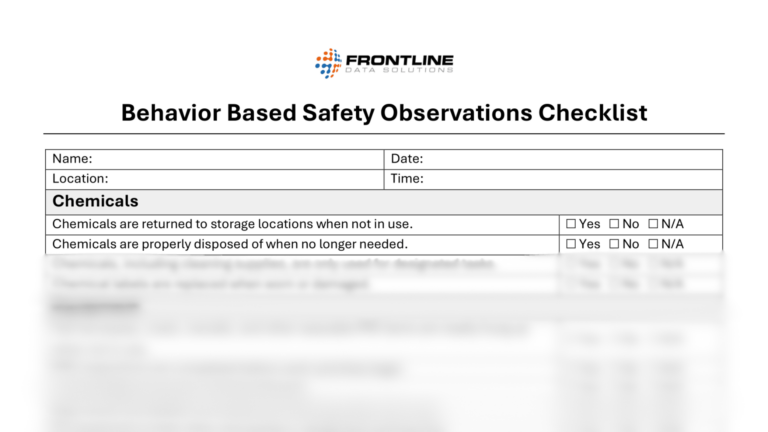Unlike traditional safety programs that focus solely on processes and equipment, behavior-based safety centers around the actions and behaviors of individuals. Let’s look at the 10 steps that can help with implementing a BBS program in your facility.
Show That You’re Committed
Like any safety program, an effective BBS program begins with strong leadership commitment. It’s crucial that top management actively supports and promotes the initiative. When leaders prioritize safety, employees are more likely to engage in safe behaviors. If there’s a cross-functional meeting happening, start with safety metrics and talk about BBS first. If you value the program, your workforce will value the program.
Involve Your Employees
Engage employees right from the start. Their input is invaluable in identifying potential safety hazards and developing strategies to address them. Involving frontline workers in the decision-making process will foster a sense of ownership and increase their participation, along with the program’s effectiveness.
Train Them on How to Observe
Train employees on how to observe and report behaviors. This training should emphasize the importance of positive reinforcement and constructive feedback. Equip them with the necessary tools to identify safe and at-risk actions. It’s also important to make the reporting and information sharing process as simple as possible. No one really wants to jump through hoops to report a “simple” observation.
Establish Clear Objectives
Clearly define the goals and objectives of the BBS program. What are you hoping to achieve by implementing BBS? Whether it’s reducing the number of incidents, getting more visibility over near-misses, improving safety culture, or achieving specific safety metrics, having clear objectives provides direction and helps measure the “efficiency” of your program.
Offer Positive Reinforcement
Recognize and reward safe behaviors. Positive reinforcement can be a very powerful motivator. Acknowledging and appreciating employees for their commitment to safety will not only boost morale but also encourage a culture of continuous improvement.
Training, Training, more Training!
Provide ongoing training to enhance employees’ safety knowledge and skills. Aside from the mandatory training, conduct workshops, seminars, and refresher courses. Try to make them fun and engaging to keep safety at the forefront and ensure the long-term success of the BBS program.
Keep Them in the Loop
Establish open lines of communication. Regularly update employees on the progress of the BBS program. Share success stories and address any concerns they might have. Communication will foster transparency and reinforce the importance of safety in the workplace.
Anonymous Feedback
Some employees might be reluctant to share what they’ve seen or experienced. Implement an anonymous feedback mechanism that allows employees to voice their opinions and suggestions. This will create an environment where everyone feels heard and valued, leading to increased visibility and program effectiveness. This can be as simple as dedicating a box for thoughts and concerns.
Collect and Analyze Data
Implement a robust system for collecting and analyzing safety data. Regularly review this data to identify trends, patterns, and areas for improvement. Data-driven insights enable organizations to make informed decisions and adapt their safety strategies accordingly. It’ll help you better determine whether implementing a BBS program is actually getting you to your objectives.
Strive for Continuous Improvement
Of course, no BBS program is perfect from the start. But, you can regularly assess and reassess the program, adjusting based on feedback, data analysis, and your ever-evolving organizational needs. A commitment to continuous improvement ensures the program remains relevant and effective over time.
All in all, implementing a successful BBS program requires many different parts to work together. From leadership commitment and employee engagement to training and continuous improvement, everyone needs to be convinced that the program is only there to help keep your workers and workplace safe. Remember, the goal is not just to prevent incidents but to cultivate a proactive safety mindset across all levels of your organization.




